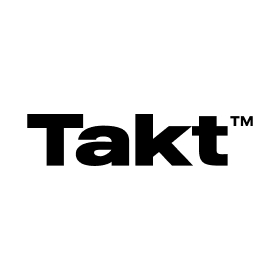
How Scaling B2B Marketing Teams Can Step Into ABM
Account Based Marketing is driving many B2B organisations’ pipeline onwards and upwards at previously unseen rates. It’s therefore unsurprising that more and more board rooms and executives are asking small marketing teams to begin their own ABM programmes.
This can be a real challenge, particularly for 1 or 2-person departments, who already face a whole host of requests for their marketing output. Balancing the rigours of ABM, the planning which needs to be done upfront, and choosing a path within this vast framework that fits your business can feel overwhelming.
This article is intended to help those people considering ABM as part of their marketing strategy, to get to grips with the core concepts, and choose some low-hanging fruit to begin the process.
ABM is a strategic framework; it starts with strategy not execution
As a marketer, you likely approach your work from a strategic standpoint anyway, and already know the importance of planning in generating results from your efforts. However, your internal stakeholders may not understand that importance.
One of the most critical early things you can do when discussing ABM internally, is to prepare an answer to the question: “Why can’t we start the campaign this week?” … or some variation, there-of. The suggestion here is to emphasize the importance of matching the account list and persona list with clearly defined pain points, used together with your messaging.
Because your campaign is only as effective as its message. Your message is centered around pain points that resonate. The only way you will build pain points that resonate, is by tailoring them to groups of personas, within groups of accounts. For example, do the same pain points apply to IT managers at e-commerce companies with 10 employees, as IT managers at e-commerce companies with 1000 employees?
Even in this example, where 2 factors are the same, but 1 is very different, the answer is probably, no. You must build a target account list which are like-minded in their requirement for your product/service. If old-fashioned database marketing is a machine gun, ABM is a sniper. You need to spend time building a scope that works, and a bullet that can do the job.
… excuse the laboured metaphor!
Tools that can help you reach your audience
In launching your ABM campaign you will have to use MarTech tools in order to track activity within a particular account, and effectively market to them. We do not recommend an ABM approach without a well-maintained CRM or Marketing Automation system.
This is because your CRM/MAT (Marketing Automation Track) will be required to hold data and help you to understand which accounts are engaging with you, or not. It will also allow you to plan campaigns based on an account’s health or lifecycle, for example beginning an email nurture 6-12 months before an important contract renewal is due.
We use some great CRMs and MATs to support our clients, preferring to use HubSpot wherever possible.
You may also wish to utilize intent tools, to understand what your target accounts are doing online. There are some very helpful examples of these, such as Cognism and Demand Base, however, Rollworks has been the one with which we’ve had the most success. From the intent tool, you can expect to get an idea of which organizations are shopping around for solutions or services like your own. This is typically most effective when you’re focusing your ABM on enterprise accounts, like retail banks.
Finally, you will want to choose the right advertising solution to reach your audience. You’ll be hard-pushed to find a solution more appropriate for ABM than Linkedin or Microsoft Display Network. Although the power of their ads might not match up to Paid Search, they offer a great way to target individuals based on self-cleaning CV data on LinkedIn profiles which is far beyond the competition.
Consider the customer lifecycle from start to finish… to start again
True ABM doesn’t stop when a prospect converts to a customer. In fact, once a prospect becomes a customer, you will have the opportunity to track entirely new data sets. If you’re a SaaS platform provider, then you will want to consider the usage of the platform through the lens of marketing. If a customer goes from 5 active licenses to 3 dormant users, 1 empty seat, and only 1 person logging in consistently, it might be time for a reactivation campaign.
NPS and customer satisfaction surveys can generate great metrics to give you a temperature check on an account and inform the sales team when they should reach out.
Are you starting to see why a CRM database is so important!? You need to store this information and keep it clean!
Less is more
So there you have it, a couple of tips from Incisive Edge, a strategy-first marketing agency for growth-obsessed B2B organizations. Some parting words of wisdom. Remember to keep your target audience tightly defined so that you can do a great job of all the above. When it comes to a target account list, a rule of thumb is less is more. Shoot for achievable, realistic, complimentary and potentially lucrative target accounts.
Good luck, and if you think you need support, please keep Incisive Edge in mind.

























